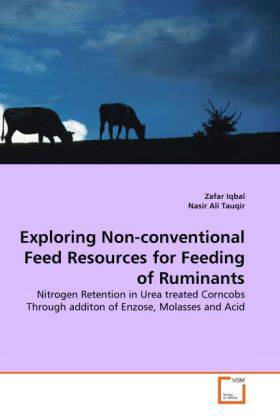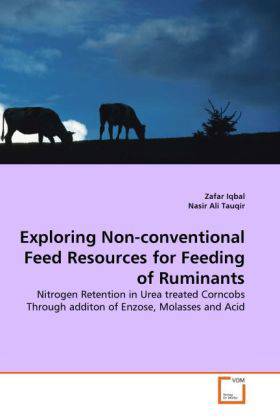
- Afhalen na 1 uur in een winkel met voorraad
- Gratis thuislevering in België vanaf € 30
- Ruim aanbod met 7 miljoen producten
- Afhalen na 1 uur in een winkel met voorraad
- Gratis thuislevering in België vanaf € 30
- Ruim aanbod met 7 miljoen producten
Zoeken
Exploring Non-conventional Feed Resources for Feeding of Ruminants
Zafar Iqbal, Nasir Ali Tauqir
Paperback | Engels
€ 67,45
+ 134 punten
Omschrijving
After urea treatment of crop residue, Ammonia- Nitrogen (NH3-N) is dissociated and lost in the atmosphere reducing the nutritional potential of this treatment. The objectives of present study were to examine the effects of enzose, molasses, acidified molasses and acidified water on NH3-N retention in urea treated corncobs and their influence on feed intake, ruminal characteristics, digestion kinetics and nitrogen balance in buffalo bulls and growth performance in sheep. Nitrogen contents were increased in corncobs ensiled with enzose. In situ ruminal degradabilities and total tract digestibilities in fistulated buffalo bulls were significantly higher with urea treated corncobs ensiled with enzose and acidified molasses than those ensiled with other additives. The results were accompanied with increased intake better intake and N balance but with slow NH3 release. Enzose treatment remained at the top. Then 5% urea treated corncobs ensiled with 5% enzose were added in rations @ 30, 35 & 40% of DM. Ration containing treated material @ 40% resulted in better nutrient intake, digestibility, N balance and growth in Lohi sheep.
Specificaties
Betrokkenen
- Auteur(s):
- Uitgeverij:
Inhoud
- Aantal bladzijden:
- 176
- Taal:
- Engels
Eigenschappen
- Productcode (EAN):
- 9783639315011
- Verschijningsdatum:
- 9/01/2011
- Uitvoering:
- Paperback
- Formaat:
- Trade paperback (VS)
- Afmetingen:
- 152 mm x 229 mm
- Gewicht:
- 267 g

Alleen bij Standaard Boekhandel
+ 134 punten op je klantenkaart van Standaard Boekhandel
Beoordelingen
We publiceren alleen reviews die voldoen aan de voorwaarden voor reviews. Bekijk onze voorwaarden voor reviews.











